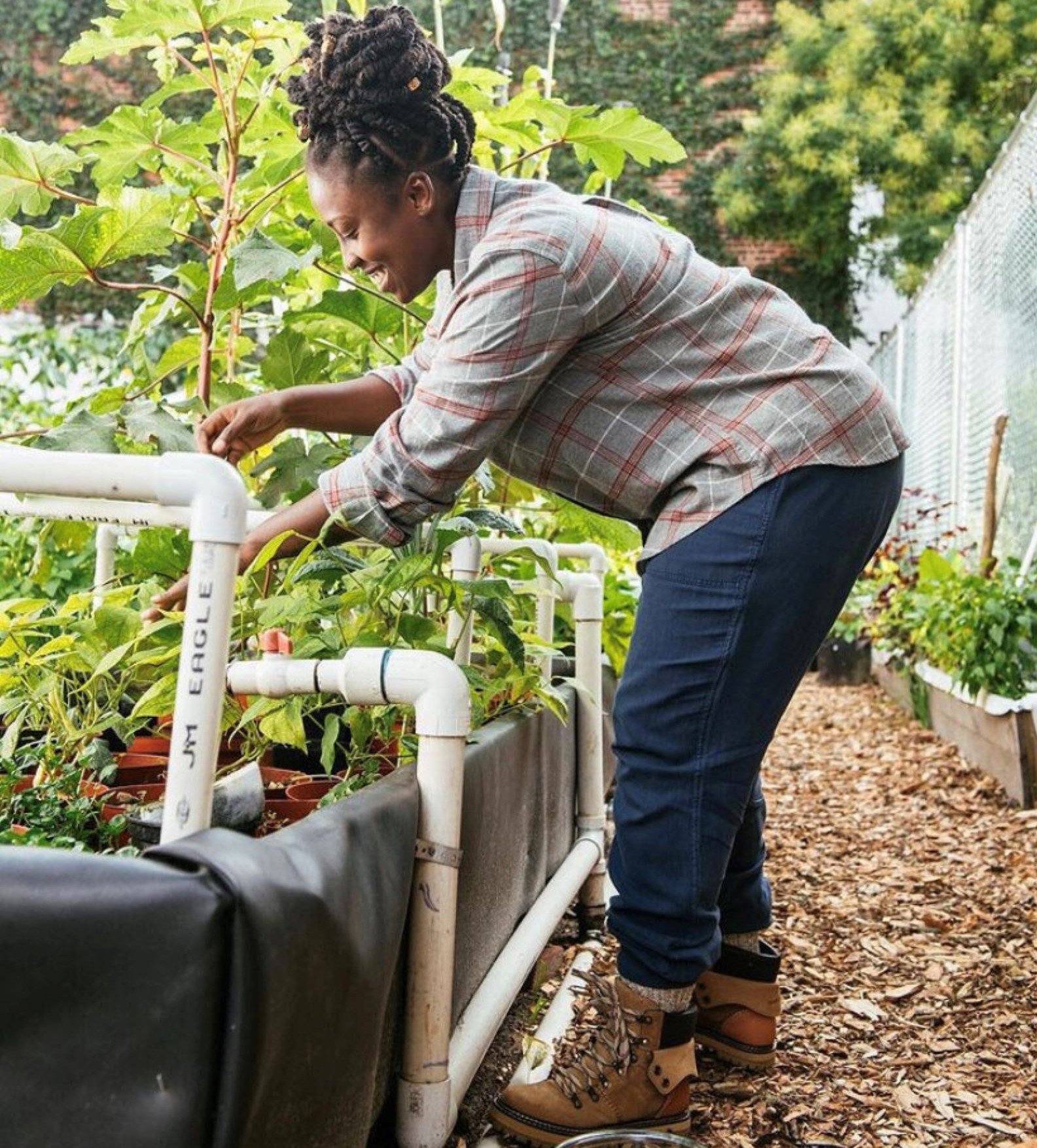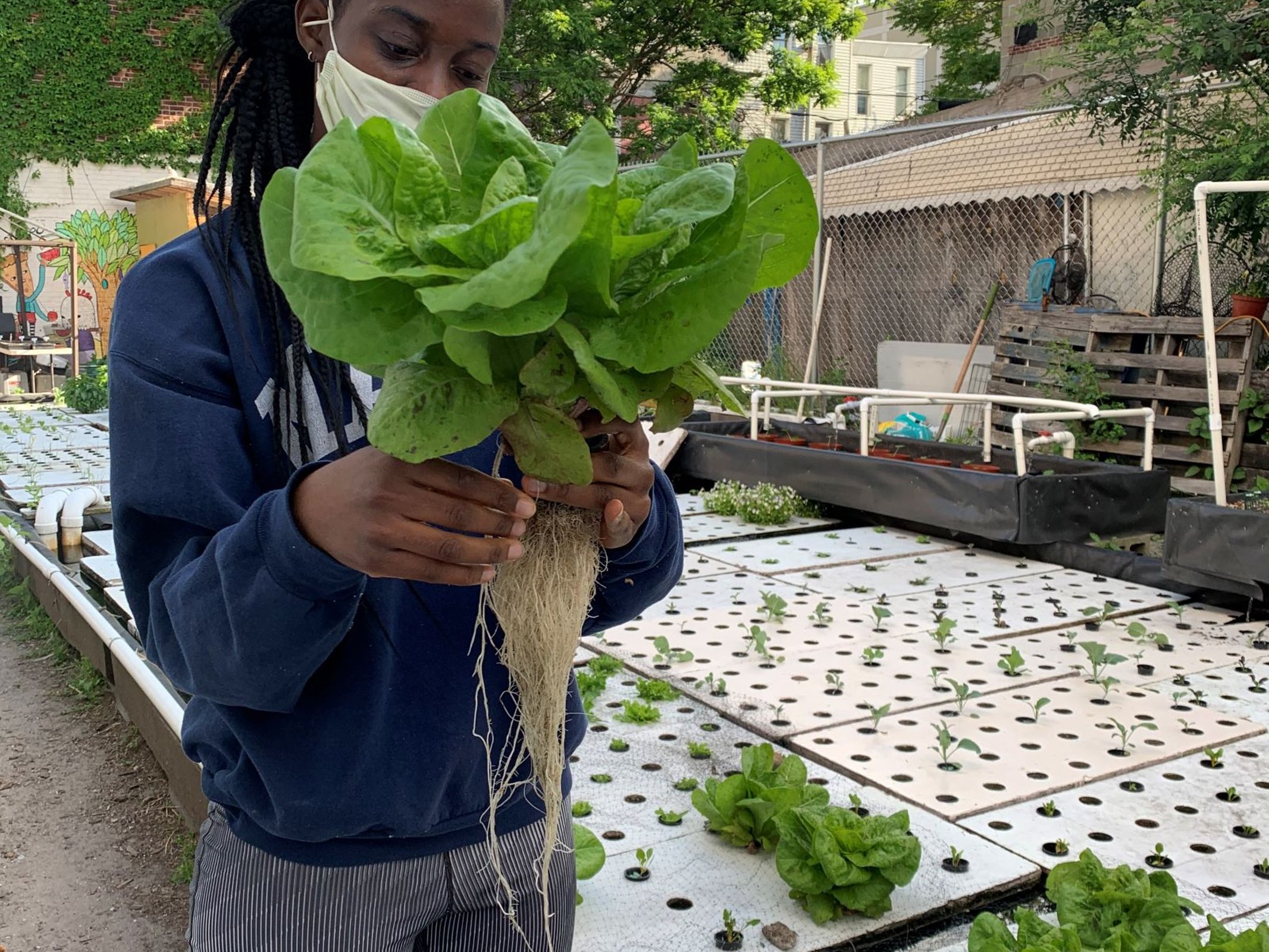Global Citizens everywhere are increasingly recognizing the need for more sustainable career options to increase global food security.
According to a 2020 report from UNICEF on the state of food security and nutrition in the world, almost 690 million people went hungry in 2019, or 8.9% of the world population. This is due, in part, to the high costs associated with eating nutritiously, the lack of access to healthy food, and the effects of climate change devastating agricultural production systems.
As more government leaders commit to becoming carbon neutral by 2050, and more people choose to change their habits (like eating less meat) to reduce their carbon footprint, methods of food production that promote a harmonious relationship between humans and the environment are becoming more common.
One of these methods involves fish.
Aquaponics farming is a method of sustainable agriculture that forms a symbiotic relationship between fish and plants. It involves the use of a fish tank placed below a grow bed for plants, where the main input to the system is fish food.
When the fish produce waste, it is cycled out of the fish tank into the grow bed, where bacteria transform ammonia into nitrates that plants need to grow. The water is then filtered and returned to the fish tank, aiding in the highly optimized, zero-waste process of farming fish and plants together.

The practice of aquaponic gardening can be traced back centuries. In central Mexico around 1000 AD, the Aztec people developed a technique known as chinampa to expand their growing efforts to the surface of lakes and ponds, according to the Permaculture Research Institute. By weaving together logs and sticks to create a “floating farm,” the Aztecs used water from the lakes and waste produced by fish to nourish crops.
Aquaponics also has roots in Southeast Asia, where farmers cultivated rice and fish concurrently, according to the United Nations' Food and Agriculture Organization. The practice of raising fish in rice fields became one of the best examples of polyculture farming as a method of sustainability.

In recent years, aquaponics has increasingly been chosen as a growing option for urban farmers, or those who practice agriculture in cities and must rely on vertical farming techniques when faced with less land area. Many of these aquaponics farmers choose to produce food for their communities, particularly in areas where economic inequalities threaten household food security.
Around the world, the environmental impacts of climate change are preventing low-income people from accessing sufficient, safe, and nutritious foods. To improve global food systems and decrease food insecurity, it is more important than ever for people to practice sustainable agricultural development.
To learn more about how aquaponics can aid in the production of sustainable food systems, Global Citizen spoke to Yemi Amu, founder and director of Oko Farms, an aquaponics farm and learning center in Brooklyn, New York.
Global Citizen: Tell me a little about your background and how you became interested in agriculture.
Yemi Amu: My background is in nutrition and behavior modification. I spent a lot of my time at the beginning of my career really using a hands-on approach to guiding people to adopting healthy dietary habits and trying to understand what the barriers are. Things like knowing how to cook ... can be a barrier for people, and knowing what food to buy from the grocery store.
I also happened, at one point, to be working with a formerly homeless population, and for that particular group going out into the world — like leaving the neighborhood, going to the grocery store to shop — it was not practical for them. They are dealing with anxiety, and [going from] being chronically homeless to living in an apartment [is] a huge adjustment that most people don’t understand.
After working with them, I found that they were only eating well when I was preparing the food for them. When I wasn’t involved, they weren’t going on their own to get healthy food. And so after going back and forth with my colleagues, who were social workers, we decided, hey, you know what, the roof of the building where the residents lived would be a great place to grow food because it was intended to be a green roof. We decided, “Why not turn that into a farm?” and really that’s how my farming career started.
So how did your interest in aquaponics specifically come about?
I discovered aquaponics while I was on the roof. I learned how to farm along with the residents and had to learn about seasonal growing, what it’s like to grow in a soil-less environment, and how to grow in raised beds. I’m from Nigeria. I grew up in a city, in Lagos, and so the idea of people farming in a city wasn’t weird. But farming in New York City? It seemed so different, and so learning about aquaponics and how you don’t have to worry about watering plants, I just found it fascinating.
I started visiting farms around the country just to see how aquaponics works in practice and make sense of it. I saw how it could play a really big role in not just feeding people but also raising awareness about alternative agricultural methods. Around 2011, hydroponics [using nutrient-rich water for agriculture instead of soil] was becoming popular, and I thought it was so great to throw aquaponics in the mix. The system can work indoors or outdoors, it saves water, and Oko Farms was built a couple of years later.
Aquaponics is also a throwback to other cultures that have used it in the past. In Peru, in China — so many cultures around the world had these models that were rooted in the idea of raising animals and plants together. It was industrial agriculture that saw people no longer raising animals and plants in tandem, so it’s great that we can bring this centuries-old model back to the urban environment.
For people who experience drought, or live in an urban environment — can aquaponics improve food access, or be used in conjunction with other methods of sustainable agriculture?
I mean, this isn't a one-size-fits-all model. Aquaponics can absolutely be used in conjunction [with other methods of sustainable agriculture].
It’s not that there is anything wrong with soil, but we are living in a very complex environment. There are barriers for many communities to access food, like not having space to grow food, and aquaponics systems can be set up to address these barriers and ecological issues.
Aquaponics, in my experience, lends itself better to small-scale production. And I think that we can ultimately guarantee food security for those of us that live in urban areas. It doesn’t require a lot of land, it saves water. Water access is limited for a lot of people around the world, and we use a lot of water in agriculture specifically. Aquaponics can address this problem because it requires very little input of water.
Your work at Oko Farms emphasizes education, specifically around helping people learn to grow their own food, in food sovereignty. Can you speak to why that is important in the production of sustainable food systems?
I haven’t seen our current system support people, empower people, or ensure food security. Giving people the tools to [control their access to food] is important. Our workshop model supports people in building their own aquaponics system, and in an urban environment it is important for us to have a space to teach the public about food systems.
At Oko, we donate some of the produce we grow, and then we sell some of it at farmers markets in the area. Sometimes people come to the farm and buy produce off the farm — they know it’s grown here. Aquaponics has helped us develop that system as we look to feed ourselves sustainably, or just feed ourselves, period.
This interview has been edited and condensed for clarity.